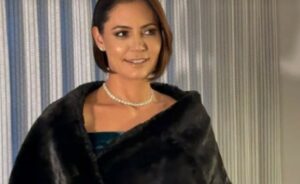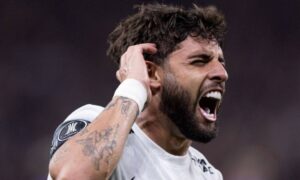White smoke billowed from the Sistine Chapel’s chimney on May 8, 2025, signaling the election of the Catholic Church’s new leader. Cardinal Robert Francis Prevost, aged 69, emerged as the successor to Pope Francis, taking the name Leo XIV. Born in Chicago, he becomes the first American pope, a groundbreaking moment in the Church’s 2,000-year history. His career, rooted in decades of service in Latin America and high-ranking Vatican roles, paints a picture of a quiet reformist ready to steer the Church forward.
The election, concluded on the conclave’s second day, required at least 89 votes from the 133 cardinals present. Prevost’s selection caught many by surprise, given his low-key public presence compared to other contenders. His experience in Peru and his role as prefect of the Dicastery for Bishops made him a trusted figure among his peers. Thousands flocked to St. Peter’s Square to witness his first appearance, a moment broadcast worldwide.
- Key highlights of the announcement:
- White smoke appeared at 2:17 p.m. Brasília time.
- Prevost addressed the crowd from St. Peter’s Basilica’s balcony.
- His first words called for unity and humility.
Global attention now focuses on Leo XIV, whose leadership will navigate the Church through a complex era. His unique blend of North American origins and Latin American expertise offers a fresh perspective for the papacy.
First American pope
Robert Francis Prevost’s ascent to Leão XIV is a historic milestone. Born on September 14, 1955, in Chicago, he is the first pontiff from a predominantly Protestant nation. Raised in a working-class neighborhood, Prevost developed a practical approach to faith that would define his career. At 22, he joined the Augustinian order, setting the stage for a global journey.
His academic credentials are formidable. He earned a theology degree from the Catholic Theological Union in Chicago and later pursued canon law studies in Rome at the University of St. Thomas Aquinas. Ordained a priest in 1982, he was dispatched to Peru two years later, where he spent much of his career. His fluency in Spanish and deep engagement with Latin American culture earned him widespread respect.
In Peru, Prevost served in Piura and Trujillo, confronting social and political challenges, including the authoritarian rule of Alberto Fujimori. His public demand for accountability during that era underscored his commitment to justice, aligning with the reformist ethos of Pope Francis.
Latin American legacy
Prevost’s decades in Peru are central to his ecclesiastical story. Arriving in 1984, he worked in Piura, a region grappling with poverty and inequality. His tenure in Trujillo, spanning the late 1980s to 1990s, coincided with Peru’s internal conflict and economic turmoil. He focused on strengthening local parishes and fostering community resilience.
In 2014, he was named administrator of the Diocese of Chiclayo, becoming a bishop. His leadership there tackled logistical challenges, such as managing a resource-strapped diocese. Prevost’s collaborative approach won praise, though his time in Peru faced scrutiny.
- Significant contributions in Peru:
- Expanded catechesis programs for rural communities.
- Promoted interfaith dialogue in indigenous areas.
- Advocated for improved conditions in underserved parishes.
His work drew Vatican attention, leading to appointments in the Congregation for the Clergy in 2019 and the Congregation for Bishops. In 2023, he became a cardinal, a rapid rise that highlighted his growing influence.
Reformist in Francis’s footsteps
Leo XIV inherits a Church shaped by Francis’s progressive reforms. Prevost’s alignment with this vision is clear in his focus on inclusivity and dialogue. As prefect of the Dicastery for Bishops, he shaped the selection of bishops who prioritize pastoral care and social justice, mirroring Francis’s priorities. His leadership—collaborative yet firm—suggests continuity.
His mastery of canon law equips him to navigate the Church’s intricate governance. Colleagues describe him as a listener who seeks consensus but acts decisively when needed. This balance will be crucial as he tackles issues like declining vocations and the Church’s role in a divided world.
Prevost’s reserved nature sets him apart from the public charisma of past popes. He avoids media attention, preferring to let his work speak. This approach may shield him from the intense scrutiny often faced by pontiffs, allowing focus on internal reforms.
Controversy in Peru
Prevost’s Peruvian tenure faced challenges. In 2023, three women accused him of delays in addressing allegations of sexual abuse by two priests in the Diocese of Chiclayo, dating back to the 1990s. One victim contacted Prevost in 2020, and he formally reported the cases to the Vatican in 2022, following Church protocols.
The diocese denied any cover-up, stating Prevost adhered to canonical procedures. One accused priest was suspended, while the other was already inactive due to health issues. The Vatican’s investigation remains unresolved as of May 2025.
- Details of the allegations:
- Victims reported abuse from their childhood.
- Prevost received formal complaints in 2022.
- The diocese emphasized adherence to Vatican guidelines.
The controversy has sparked debate about Prevost’s handling of sensitive issues. Supporters argue he operated within Church law, but his response to such matters will be closely monitored.
Conclave under global watch
The conclave that elected Leo XIV was a meticulously organized affair. Starting on May 7, 2025, it convened 133 cardinals, including seven from Brazil. The first day ended with black smoke, signaling no candidate had secured the necessary two-thirds majority. Two morning rounds on Thursday yielded the same result.
Secrecy defined the proceedings, with cardinals bound by oaths of silence. Vatican officials ensured no external communication, preserving the conclave’s integrity. Prevost’s selection reflects a balance of continuity and new leadership.
Vatican roles before the papacy
Before his election, Prevost held pivotal Vatican positions. As prefect of the Dicastery for Bishops, he oversaw global bishop appointments, gaining deep insight into the Church’s challenges. His work prioritized leaders aligned with Francis’s pastoral vision.
He also served as president of the Pontifical Commission for Latin America, fostering stronger ties with the region. These roles demanded diplomatic finesse, balancing diverse episcopal needs. They prepared him for the papacy’s multifaceted demands.
- Key responsibilities:
- Evaluated candidates for bishoprics worldwide.
- Supported training initiatives for Latin American clergy.
- Addressed regional pastoral challenges for the Vatican.
His short tenure as a cardinal—less than two years—makes his rise to pope extraordinary, reflecting the confidence of his peers.
First appearance as Leo XIV
Leão XIV’s debut as pope was a global event. From the balcony of St. Peter’s Basilica, he delivered a concise message of unity, dressed in traditional papal attire. His calm demeanor belied the enormity of his new role.
An estimated 50,000 people filled St. Peter’s Square, waving flags from around the world. Prevost’s choice of the name Leão XIV, recalling Leão XIII’s legacy, suggests a commitment to tradition and reform. His brief address emphasized humility and service, requesting prayers from the faithful.
The moment resonated widely, setting a tone of connection with the global Catholic community. It marked the start of a papacy expected to prioritize unity amid diverse challenges.
Theological foundation
Prevost’s academic background strengthens his leadership. His Chicago theology degree grounded him in pastoral care, while his Roman studies in canon law sharpened his grasp of Church governance. This dual expertise bridges scholarship and administration.
His time at the University of St. Thomas Aquinas in Rome was transformative, immersing him in canon law’s complexities. This knowledge will guide his handling of ecclesiastical appointments and disciplinary issues.
Colleagues praise his ability to simplify theological concepts for broad audiences. This skill may enhance his communication of the Church’s message, especially in regions where Catholicism competes with other faiths.
Francis’s enduring influence
Pope Francis’s 12-year papacy reshaped the Church, and Leo XIV is positioned to extend this legacy. Francis’s focus on mercy, environmental care, and interfaith dialogue redefined the Church’s image. Prevost, a key figure in Francis’s Curia, shares these values.
During Francis’s hospitalization in early 2025, Prevost led a public prayer in St. Peter’s Square, showcasing his pastoral depth. The gesture earned him admiration, positioning him as a natural successor.
- Francis’s impact on Prevost:
- Championed inclusion of marginalized communities.
- Urged bishops to prioritize pastoral over administrative roles.
- Reinforced the Church’s social justice commitment.
Leo XIV faces the task of sustaining this vision while addressing emerging global issues. His Latin American experience may inform his approach to topics like migration and inequality.
Looking ahead
Leo XIV assumes the papacy at a critical juncture. The Church grapples with declining membership in Europe, growth in Africa and Asia, and debates over women’s roles and clerical celibacy. Prevost’s reformist leanings suggest a thoughtful approach, though his reserved style may avoid bold public gestures.
His American background introduces a new dynamic to the Vatican, long dominated by European popes. His understanding of U.S. cultural trends could bolster the Church’s presence in a nation where Catholicism contends with secularism and evangelicalism.
With over 1.3 billion Catholics worldwide, Leo XIV’s early actions will be closely watched. His focus on unity signals a papacy aimed at bridging divides, both within the Church and beyond.

White smoke billowed from the Sistine Chapel’s chimney on May 8, 2025, signaling the election of the Catholic Church’s new leader. Cardinal Robert Francis Prevost, aged 69, emerged as the successor to Pope Francis, taking the name Leo XIV. Born in Chicago, he becomes the first American pope, a groundbreaking moment in the Church’s 2,000-year history. His career, rooted in decades of service in Latin America and high-ranking Vatican roles, paints a picture of a quiet reformist ready to steer the Church forward.
The election, concluded on the conclave’s second day, required at least 89 votes from the 133 cardinals present. Prevost’s selection caught many by surprise, given his low-key public presence compared to other contenders. His experience in Peru and his role as prefect of the Dicastery for Bishops made him a trusted figure among his peers. Thousands flocked to St. Peter’s Square to witness his first appearance, a moment broadcast worldwide.
- Key highlights of the announcement:
- White smoke appeared at 2:17 p.m. Brasília time.
- Prevost addressed the crowd from St. Peter’s Basilica’s balcony.
- His first words called for unity and humility.
Global attention now focuses on Leo XIV, whose leadership will navigate the Church through a complex era. His unique blend of North American origins and Latin American expertise offers a fresh perspective for the papacy.
First American pope
Robert Francis Prevost’s ascent to Leão XIV is a historic milestone. Born on September 14, 1955, in Chicago, he is the first pontiff from a predominantly Protestant nation. Raised in a working-class neighborhood, Prevost developed a practical approach to faith that would define his career. At 22, he joined the Augustinian order, setting the stage for a global journey.
His academic credentials are formidable. He earned a theology degree from the Catholic Theological Union in Chicago and later pursued canon law studies in Rome at the University of St. Thomas Aquinas. Ordained a priest in 1982, he was dispatched to Peru two years later, where he spent much of his career. His fluency in Spanish and deep engagement with Latin American culture earned him widespread respect.
In Peru, Prevost served in Piura and Trujillo, confronting social and political challenges, including the authoritarian rule of Alberto Fujimori. His public demand for accountability during that era underscored his commitment to justice, aligning with the reformist ethos of Pope Francis.
Latin American legacy
Prevost’s decades in Peru are central to his ecclesiastical story. Arriving in 1984, he worked in Piura, a region grappling with poverty and inequality. His tenure in Trujillo, spanning the late 1980s to 1990s, coincided with Peru’s internal conflict and economic turmoil. He focused on strengthening local parishes and fostering community resilience.
In 2014, he was named administrator of the Diocese of Chiclayo, becoming a bishop. His leadership there tackled logistical challenges, such as managing a resource-strapped diocese. Prevost’s collaborative approach won praise, though his time in Peru faced scrutiny.
- Significant contributions in Peru:
- Expanded catechesis programs for rural communities.
- Promoted interfaith dialogue in indigenous areas.
- Advocated for improved conditions in underserved parishes.
His work drew Vatican attention, leading to appointments in the Congregation for the Clergy in 2019 and the Congregation for Bishops. In 2023, he became a cardinal, a rapid rise that highlighted his growing influence.
Reformist in Francis’s footsteps
Leo XIV inherits a Church shaped by Francis’s progressive reforms. Prevost’s alignment with this vision is clear in his focus on inclusivity and dialogue. As prefect of the Dicastery for Bishops, he shaped the selection of bishops who prioritize pastoral care and social justice, mirroring Francis’s priorities. His leadership—collaborative yet firm—suggests continuity.
His mastery of canon law equips him to navigate the Church’s intricate governance. Colleagues describe him as a listener who seeks consensus but acts decisively when needed. This balance will be crucial as he tackles issues like declining vocations and the Church’s role in a divided world.
Prevost’s reserved nature sets him apart from the public charisma of past popes. He avoids media attention, preferring to let his work speak. This approach may shield him from the intense scrutiny often faced by pontiffs, allowing focus on internal reforms.
Controversy in Peru
Prevost’s Peruvian tenure faced challenges. In 2023, three women accused him of delays in addressing allegations of sexual abuse by two priests in the Diocese of Chiclayo, dating back to the 1990s. One victim contacted Prevost in 2020, and he formally reported the cases to the Vatican in 2022, following Church protocols.
The diocese denied any cover-up, stating Prevost adhered to canonical procedures. One accused priest was suspended, while the other was already inactive due to health issues. The Vatican’s investigation remains unresolved as of May 2025.
- Details of the allegations:
- Victims reported abuse from their childhood.
- Prevost received formal complaints in 2022.
- The diocese emphasized adherence to Vatican guidelines.
The controversy has sparked debate about Prevost’s handling of sensitive issues. Supporters argue he operated within Church law, but his response to such matters will be closely monitored.
Conclave under global watch
The conclave that elected Leo XIV was a meticulously organized affair. Starting on May 7, 2025, it convened 133 cardinals, including seven from Brazil. The first day ended with black smoke, signaling no candidate had secured the necessary two-thirds majority. Two morning rounds on Thursday yielded the same result.
Secrecy defined the proceedings, with cardinals bound by oaths of silence. Vatican officials ensured no external communication, preserving the conclave’s integrity. Prevost’s selection reflects a balance of continuity and new leadership.
Vatican roles before the papacy
Before his election, Prevost held pivotal Vatican positions. As prefect of the Dicastery for Bishops, he oversaw global bishop appointments, gaining deep insight into the Church’s challenges. His work prioritized leaders aligned with Francis’s pastoral vision.
He also served as president of the Pontifical Commission for Latin America, fostering stronger ties with the region. These roles demanded diplomatic finesse, balancing diverse episcopal needs. They prepared him for the papacy’s multifaceted demands.
- Key responsibilities:
- Evaluated candidates for bishoprics worldwide.
- Supported training initiatives for Latin American clergy.
- Addressed regional pastoral challenges for the Vatican.
His short tenure as a cardinal—less than two years—makes his rise to pope extraordinary, reflecting the confidence of his peers.
First appearance as Leo XIV
Leão XIV’s debut as pope was a global event. From the balcony of St. Peter’s Basilica, he delivered a concise message of unity, dressed in traditional papal attire. His calm demeanor belied the enormity of his new role.
An estimated 50,000 people filled St. Peter’s Square, waving flags from around the world. Prevost’s choice of the name Leão XIV, recalling Leão XIII’s legacy, suggests a commitment to tradition and reform. His brief address emphasized humility and service, requesting prayers from the faithful.
The moment resonated widely, setting a tone of connection with the global Catholic community. It marked the start of a papacy expected to prioritize unity amid diverse challenges.
Theological foundation
Prevost’s academic background strengthens his leadership. His Chicago theology degree grounded him in pastoral care, while his Roman studies in canon law sharpened his grasp of Church governance. This dual expertise bridges scholarship and administration.
His time at the University of St. Thomas Aquinas in Rome was transformative, immersing him in canon law’s complexities. This knowledge will guide his handling of ecclesiastical appointments and disciplinary issues.
Colleagues praise his ability to simplify theological concepts for broad audiences. This skill may enhance his communication of the Church’s message, especially in regions where Catholicism competes with other faiths.
Francis’s enduring influence
Pope Francis’s 12-year papacy reshaped the Church, and Leo XIV is positioned to extend this legacy. Francis’s focus on mercy, environmental care, and interfaith dialogue redefined the Church’s image. Prevost, a key figure in Francis’s Curia, shares these values.
During Francis’s hospitalization in early 2025, Prevost led a public prayer in St. Peter’s Square, showcasing his pastoral depth. The gesture earned him admiration, positioning him as a natural successor.
- Francis’s impact on Prevost:
- Championed inclusion of marginalized communities.
- Urged bishops to prioritize pastoral over administrative roles.
- Reinforced the Church’s social justice commitment.
Leo XIV faces the task of sustaining this vision while addressing emerging global issues. His Latin American experience may inform his approach to topics like migration and inequality.
Looking ahead
Leo XIV assumes the papacy at a critical juncture. The Church grapples with declining membership in Europe, growth in Africa and Asia, and debates over women’s roles and clerical celibacy. Prevost’s reformist leanings suggest a thoughtful approach, though his reserved style may avoid bold public gestures.
His American background introduces a new dynamic to the Vatican, long dominated by European popes. His understanding of U.S. cultural trends could bolster the Church’s presence in a nation where Catholicism contends with secularism and evangelicalism.
With over 1.3 billion Catholics worldwide, Leo XIV’s early actions will be closely watched. His focus on unity signals a papacy aimed at bridging divides, both within the Church and beyond.







